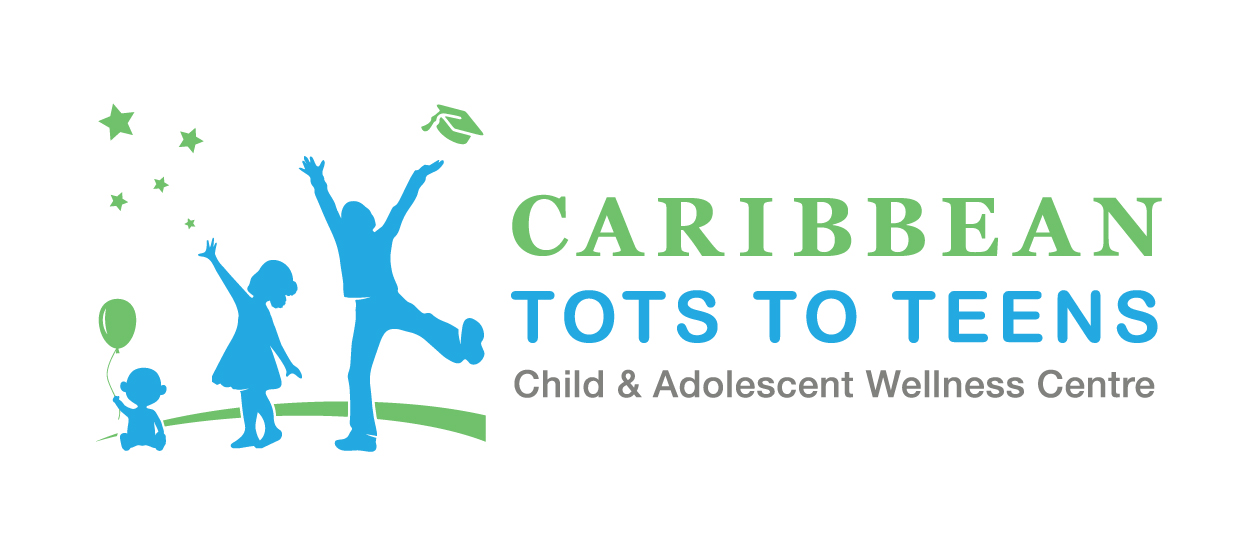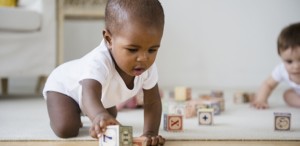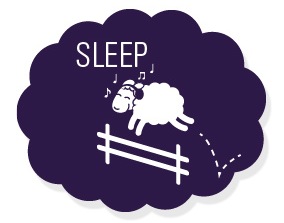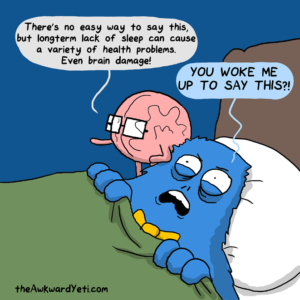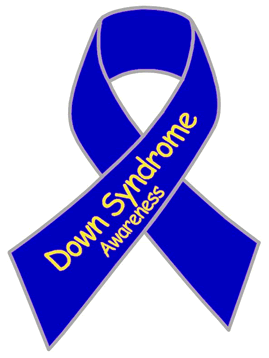Bullying Shackles | Verol Billett

Being a victim of bullying is a heavy burden to bear. Being constantly preyed upon can weaken one’s mental strength and sense of resilience; leaving them in a pool of hopelessness, and a small ball of anxiety. The topic of bullying has been on the lips of many, and is a conscious concern for parents and caregivers. The reality is, bullying is very much present in our Jamaican/Caribbean society, and daily, we are hearing and seeing it in its various forms.
According to the American Psychological Association, bullying is a form of aggressive behaviour in which someone intentionally and reportedly causes another person injury or discomfort. Bullying can take the form of:
- physical contact
- in the exchange of words,
- or more subtle actions such as repetitive taunting.
Interestingly, a key trait of this phenomenon is that there is a perceived imbalance of power. The bully is perceived to have more power or influence over the victim. The bully then uses his/her “greater power” to manipulate their victim.
Types of Bullying
No longer is bullying just a matter of the bigger child taking physical advantage on the smaller child. We have moved much further beyond that. While this still happens, we also have to take into account more modern manifestation of the phenomena. Believe it or not, as we mature as a society, bullying has become more dynamic, and is more easily done. According to the National Centre Against Bullying, there are four main types:
- Physical Bullying which refers to intentional direct and forceful physical contact inflicted by the bully unto the victim for example, by hitting, pinching, pushing or kicking.
- Verbal Bullying refers to the use of speech to insult, intimidate or manipulate an individual. These may include teasing, insulting or name calling.
- Social Bullying refers to the harming of an individual by targeting their reputation or humiliating them, which would result in discrimination or isolation.
- Cyber Bullying refers to individuals using the internet to harm their targets either through private means such as direct/private messages/emails or on public forums such as social media, public forums, blogs or websites.
Signs of Bullying
Bullying can be overt, meaning that it is observable by others. It can be covert, where individuals outside of the interaction are unable to detect what is occurring. However, what we can look for are the effects of bullying that may occur in an individual. Changes may occur which may include:
- change in personality or behaviour, where the child becomes more aggressive or more socially withdrawn
- change in perception of self or decreased self-esteem
- eating/sleeping patterns have changed
- decreased desire to engage in pleasurable activities
- showing signs of avoiding people and places.
Watch out for unexplained bruises, or constant or unexplained damage to property, or missing property; patterns of illnesses or random outbursts and frequent mood swings. Enduring bullying for lengthy periods could result in the development of mental illnesses. These are just some of the signs one could see in a child who is being bullied. Notably, this list is not exhaustive, and the presence of these in your child may not be as a result of bullying.
Breaking the Chains
If you witness bullying, speak up, regardless it is your child or not. If the bully is from your child’s school community, speak to a teacher, an administrator, or the guidance counselor at the school so that the issue can be investigated and resolved quickly. A school cannot act upon a matter unless they are aware that it is happening.
If it is outside of school, such as at your child’s extracurricular activity, speak to the organizer of the activity. If the children associate in a social environment, then seek audience with the bully’s parents to resolve the issue calmly.
In order for our children to be saved, it is important that adults foster a good relationship with their children so that they will be able to speak to them when something bad is happening to them. They need to feel safe and loved. Sometimes, when children feel bullied, the bully plays into the hopelessness of the victim so that they feel they have no one they can trust. Therefore, the bully intimidates them into believing that they will be punished should they speak up.
Many a times, the bully also has chains that need to be broken. Though it may be difficult to do so because your child is the victim, it is important that a calm approach is used so that one can understand both bully and victim. There are various reasons one can resort to bullying and this needs to be understood. Find the best way to correct the issue. Importantly, just punishing the bully will not make the issue go away. The root cause, which could be social, mental, emotional or a combination, should be addressed.
Being Free and Happy
Helping all the parties involved in a bullying situation seems to be the best way to go in effectively resolving the issue. The aim is to have all our children happy and whole. It is very useful to have children in this context examine the relationship, and have them be involved the resolution. This promotes understanding; thus, building healthy conflict resolution skills and helping to build confidence in self. In order to ensure this happens, adults have to remember we are their potential models for how to be free and happy!
Written by Verol Billett, Associate Clinical Psychologist
Learn MoreIs My Baby Growing Properly? | Kerry Weatherly
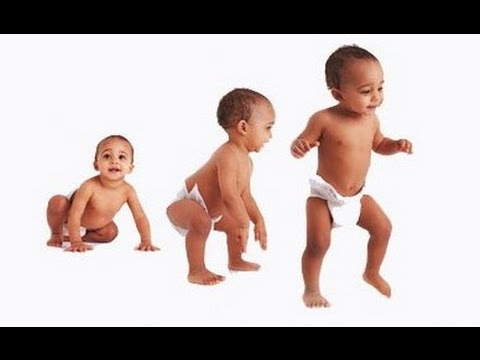
WEIGHT GAIN & GROWTH
The relationship between weight gain and growth begins at conception and continues through adolescence. From birth to the first year of life is a period of rapid weight gain and growth. The general guidelines for growth in the first year of life are:
Weight
- baby loses 5-10% of birth weight in the first week and regains this by 2-3 weeks
- birth weight is doubled by about 5 months and tripled by 12 months
Height / Length
- birth length increases 1.5 times in 12 months about 25.5 cm
Head Circumference
- birth head circumference increases by about 7.6 cm in 12 months.
It is important to remember these are guidelines. Weight gain and growth in infants will be individual. Clinicians track and assess growth using growth charts. These charts were developed based on standards which assume optimal conditions are present. Your infants growth and or weight may be above or below the standard. In many cases this is normal, and the overall trend is more important than a single recording. If you are concerned about a trend talking with a physician and a nutritionist who works with children may provide useful tips and practices to keep your baby on track. We strongly recommended that you keep a record of your infant’s growth and weight and update it regularly.
Important to note:
Exclusive breastfeeding means that baby gets ONLY breast milk only for the first six months of life.
This is recommended for an infant’s ideal growth and development.
COMPLEMENTARY FEEDING
At the age of six months complementary feeding should begin. Complementary foods are added with continued breast or formula feeding. Breast milk no longer provides all the nutrients needed for continued healthy growth and development after six months. Complementary feeding is necessary for adequate nutrition. One such nutrient required during this period of rapid growth is iron. Some good sources are fortified cereals, pureed meat, chicken, peas and beans. Vitamins C helps in the absorption of iron from plant sources. Vitamin C foods include pureed vegetables and fruit.
Complementary feeding, with the introduction of new textures and flavours is also important for taste development, acceptance of new foods and even speech.
Written by, Kerry Weatherly, Registered Dietitian/Nutritionist
Learn MoreLess is More….But Not With Sleep| Janelle Reid

Sleep is an active function which our body requires for optimal performance. The body has a sleep cycle; while we sleep several tasks are operating simultaneously such as processing, restoration and strengthening. I bet you thought you were dead asleep! Poor sleep hygiene can affect our state of well-being resulting in an increased risk for physical and mental illnesses such as heart disease, stroke, cancer, reduced immune system, weight gain, anxiety and depression.
Time to Sleep
Moreover, children, adolescents and adults require varying hours of sleep for optimal body function. According to National Sleep Foundation, it is recommended that newborns to the toddler years (0-2 years old) should have 11-17 hours of sleep. Preschoolers to school aged children (3-11 years old) require 9- 13 hours of sleep. Teenagers to young adults (12-25 years old) require 7-10 hours of sleep and adults (26 and older) require 7-to 9 hours of sleep. Getting the recommended hours of sleep is important! Are you ready for a good night’s sleep?
The Sleep Cycle
There are two main types of sleep, rapid eye movement (REM) sleep and non-rapid-eye-movement (NREM) sleep. This cycle takes place throughout the night beginning with NREM sleep and transitioning into REM sleep. NREM and REM sleep alternate throughout a night’s rest.
During REM sleep the body becomes energized and dreaming takes place. Rapid Eye Movement sleep occurs approximately 90 minutes after falling asleep. Have you ever felt like you are falling or experienced sudden twitches while you are asleep? If you said yes, you are experiencing NREM sleep. This stage of sleep has three cycles and the human body moves from wakefulness sleep (stage one) to less responsive sleep (stage three).
Sleep and Mental Health for Children and Adults
On the other hand, a correlation between lack of sleep and mental health has been identified through several research studies. In fact, some studies concluded sleep deprivation in children and adolescents later resulted in some mental health disorders in adults; one example is depression. On the contrary, patients diagnosed with some mental health disorders such as anxiety disorder, post traumatic stress disorder (PTSD), obsessive compulsive disorder (OCD) and phobias may experience sleep deprivation.
In addition, substance use including prescribed drugs, legal and illegal substances can disrupt the sleep cycle which may result in sleep disturbance. It is best to avoid substances and get a good night’s rest.
Sleep Hygiene
Sleep hygiene relates to the routines and behaviours one can develop throughout the course of the day and before bedtime. This might include a regular sleep schedule, avoiding naps, getting out of bed within 5-10 minutes of being awake, curb your habit of reading or watching television in the bed, reduce caffeine intake, avoid substance use, ensure your bedroom is quiet and comfortable, and have some quiet time before heading to bed. Did you know exposure to natural sunlight helps to regulate your normal sleep-wake pattern? Get out and get some sunlight!
Let’s Count Sheep
Are you ready to sleep? Remember lack of sleep can trigger emotional distress and may result in mental health disorders. Therefore, ensure you develop good sleep hygiene, avoid substances, and get the required hours of sleep for optimal functioning.
Written by, Janelle Reid, Mental Health Counsellor & EMDR Counsellor
Learn MoreWhen is a problem REALLY a problem | Dr. Shauna Miller
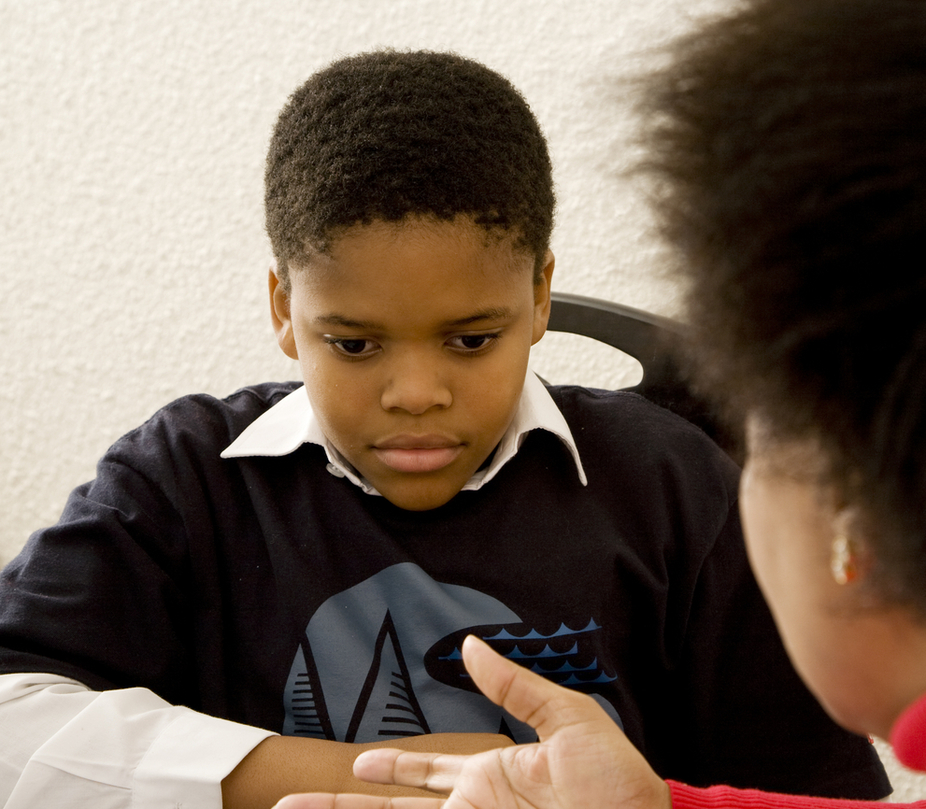
It can be difficult to figure out if a behaviour that you are noticing (or not noticing!) in your child needs special attention. Is it a phase? Will they grow out of it? Am I worrying too much?
All our children have their own individual personalities and preferences, strengths and challenges, so how do we know when an issue is concerning enough to seek help?
PARENT CHECK:
One way of deciding if a behaviour warrants attention is to check it against others the same age. How do most others in their class or their friend group act or cope? Sometimes, even if the same behaviour exists with peers, it may be more intense or frequent for your child which could be an indicator of trouble. Three year olds may tantrum, but having a tantrum every day for an extended time would be concerning. Teenagers are notorious for needing their own space (which is developmentally appropriate), but withdrawing from family and friends, and activities they liked should be a warning sign.

TEACHERS CHECK:
Another check can be with other caregivers who see your child. Teachers and doctors both engage with a wide spectrum of children at the same age as your child, and can be a good judge on whether a behaviour is atypical or concerning. Don’t hesitate to ask if others have noticed an issue or if they have the same level of concern.
IMPACT ON SCHOOL LIFE OR SOCIAL LIFE
Always keep in mind that children have differing abilities and needs. Even if something seems atypical compared to others, ask yourself whether the behaviour is affecting your child’s life in some way. Is it having an impact on their school life or their social life? This should be the key factor in deciding if an issue needs to be taken care of.
FIRST STEPS:
Identifying a problem is just the first step to finding a solution. The earlier a problem is addressed the better the outcomes and less chance of greater problems down the road. If you think something is off or could be wrong, ask around informally. Get other opinions. Get a formal assessment or speak to a specialist.
We can all work together to get the best outcomes for our children.
Written by: Dr. Shauna Miller, School Psychologist
Learn MoreSuicidal Ideation Vs. Suicidal Intent: How to Assess | Craig McNally

Helping professionals such as doctors, nurses, social workers and mental health professionals are all guided by the ethical standard of confidentiality. In a nutshell, confidentiality is considering everything a client or patient shares in the session sensitive, private, privileged information, and not suitable or allowable for sharing with others –without consent. There are however exceptions to confidentiality, which may be determined by legislation, such as the Child Care and Protection Act 2004. The Act identifies who it refers to as Prescribed Persons (which include all Helping Professionals), holding them to reporting factual or suspected incidents of abuse or ill treatment of a minor. Another exception to confidentiality which as far as I know, is not on the law books, but an ethical standard, is reporting or providing protection to a client who is considered a risk to himself (and/or others).
When a client reports self harm, and specifically in this article I am referring to suicide, it is important that the Clinician determines whether the client’s suicidality is ideation or intent. What do I mean by ideation? A client who has suicidal ideation usually reports that they have thoughts of dying, or a desire to not exist anymore. While ideation is a clinical symptom that always warrants attention, it has been my experience that besides depression, clients who have thoughts of dying or a desire to not be around anymore, are facing a life situation for which a practical outworking, and flexing of effort appear ineffective. The unchanging circumstances create anxiety and emotional distress which are unbearable to the client. As such, their defence mechanism ‘drive’ chips in and a sole, likely escape of the frustration presents as absenting one’s presence from the situation, since they are seemingly powerless to do anything else. Dying becomes the only actionable ability.
While this is not the only explanation of why clients engage in suicidal ideations, I have had numerous clients who ideate about dying, and when I inform them that I might have to contact their next of kin or have them hospitalized, either of two things happen: One is that they quickly gain perspective and insist that they really don’t want to end their life, they just don’t know how to solve their problem, or on the other hand, there are clients who present with an insatiable narcissistic urge, and out of their craving for attention, say that they feel like killing themselves. Again, when I inform these clients of my ethical responsibility to ensure they do not harm themselves, their ‘need’ for attention wanes, and they all of a sudden gain insight.
These instances are however not textbook templates or applicable in every setting, but does underscore the need to be able to clinically assess and case conceptualize on an individual basis. So when then is a client intent on completing suicide? Well for starters, when we talk about suicide intent, we mean that the client or patient will likely take his /her own life if left to themselves or is unsupervised. In other words, there are enough indications based on the clinical assessment, that indicate self harm is imminent.
There are a number of questions which inform suicidal intent, but clinicians should note that the following circumstances are strong prompts for a high risk client:
- Losing a family member or friend to suicide
- Client or patient has a history of suicidal ideation or attempt/s
- Client has suffered a major loss (death of a family or friend, loss of a pet, relationship, opportunity, reputation, failing an exam etc.)
- The client or patient has recently received a terminal diagnoses
- The client or patient is baring severe self-guilt
Besides these circumstances (list not exhausted), a clinician should include in his or her assessment, the following questions, which inform whether the client has a plan, and how well developed it is:
- When will you kill yourself?a. It is ok to directly state what the client wants to do. I suggest you use the client’s words, but it is also important to allow the client to hear what they are planning to do, and hear it in plain words, not euphemism.b. This question will alert the Clinician to a likely/specific day or time of the attempt.c. Information about day or time indicates opportunity. If the client is unable to identify a day or time, this could mean they have little opportunity.
- Where will you kill yourself? a. This of course informs the location the attempt will be made. This means measures can be put in place to lessen the opportunity of being alone/unsupervised.
- How do you plan to kill yourself?a. This question speaks to the lethality of the method, and how quickly death could occur. For example, death is far swifter if a client shoots him/herself, verses he or she taking a cocktail of pills.
- Do you have access to (the means)?a. If a client does not have ease of access to a means of inflicting self harm, then the opportunity or likelihood of lethality (and death) is significantly minimized.b. Access will also inform supervision measures such as where the client is being monitored during treatment.
Following this checklist is not a guarantee that a client or patient will not attempt or complete suicide. What it does however, is provide an opportunity to respond to the hopelessness of a client, and offer treatment. The more affirmatives the client responds to, is the greater the possibility of self harm.
Written by Craig McNally, JP, Licensed Associate Counselling Psychologist
Learn MoreCelebrating Literacy | Kellie-Anne Brown-Campbell
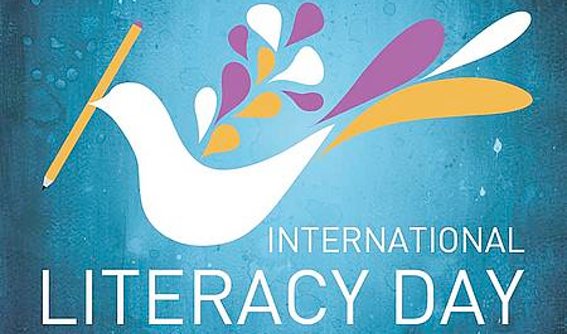
One of the age old phrases that most of us grew up hearing as young children is “Reading maketh the man”. It was drilled into our heads that to do anything meaningful, and succeed at school and life, literacy skills were critical! According to the Oxford Dictionary online, literacy is defined as “the ability to read and write”, and I would add, “The ability to read and write, at least at your age/grade levels”. It is very important to highlight that literacy is not just related to reading skills, but also covers one’s written expression and written language skills. Reading can be seen as a mode of communication, a way of communicating with the past, a way of reaching into the future. If we think about books, the plethora of books that have been written, one’s mind will be unable to fathom or comprehend the vast array of topics that are covered.
As we teach reading skills, I shall use this platform to highlight that it is equally important to improve and explicitly teach our children writing skills. Many times, persons may not have the power or opportunity to express themselves verbally, but the “power of the pen” cannot be denied. In our local context here in Jamaica, we have assessments of our children’s writing skills as early as Grade Three as part of the Grade Three Literacy and Numeracy Diagnostic Test. A component of the literacy assessment is Communication Task which usually requires students to write a letter on a particular topic, or they may be given pictures from which they will have to construct an organized and well-sequenced story.
International Literacy Day 2017 will be celebrated under the theme, “Literacy in a Digital World”. This theme is quite appropriate as the world is rapidly becoming more digitized. However, the importance of being able to communicate thoughts and ideas in writing (or in typing), will always be an important skill. As my parents used to say “if you don’t read you won’t be able to write well”. Again, we see the inseparable connection between reading and writing. Reading helps children to learn new words and vocabulary, how words are used in context, spelling, etc. Educators, especially those teaching language arts, find that children who are good readers, are also often good writers. It is highly recommended that parents encourage the development of writing skills alongside reading, especially as children progress to higher grades.
As the school year starts let us remember the importance of literacy skills and the fact that these skills need to be directly taught and reinforced, not just at school but also at home. Parents can encourage children to read and write more, and also model the behaviours that they want to see in their children. Some way that parents can help children develop their writing skills include:
- Have young children read material of interest, whether paperback or electronic, and encourage the drawing and simple labelling of pictures/drawings.
- As children get older and reading/spelling skills improve, encourage journal writing or the writing of very simple stories (one or two sentences), accompanied by pictures.
- Encourage reading out loud and the development of writing skills based on material read.
As we celebrate International Literacy Day, let us as parents and educators remember that young children will learn to read, but as they get older they read to learn. Reading can take our children places they may have never dreamed they could go and through reading they are able to build the skills necessary to develop writing skills. We have to be patient in teaching them writing skills. As you read together and write together, just think – You are helping your child to make strides to becoming a better reader, writer and to a larger extent a great communicator!
Written by: Kellie-Anne Brown-Campbell, Licensed Associate School Psychologist
Learn MoreLet’s Get Physical | Marie Reynolds
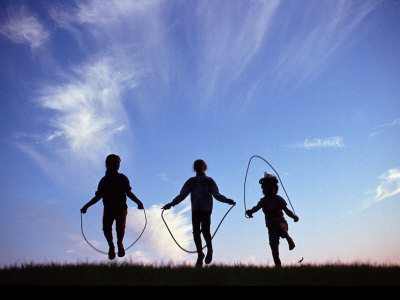
Children today spend less time engaging in outdoor play and physical activity, and a lot more time indoors in front of one screen or another, whether TV, computer, tablet, smartphone or video game. On a local TV children’s quiz show, the hobby most claimed by participants is “surfing the net.” As children’s physical activity and outdoor play have declined, there has been evidence of increased occurrence of mental health concerns such as anxiety, depression, ADHD and low self-esteem.
Nevertheless, both at home, and in school, children are punished for unacceptable behaviour by having their recess time cut or taken away. As significant exams approach, it is not uncommon for children’s extra-curricular activities and playtime to be significantly reduced or cut altogether so that they can focus on extra lessons and other preparation. However, have we ever considered that children and adolescent’s learning, memory, and focus, as well as mental health and emotional well- being might actually benefit from physical activity and outdoor play?
Aerobic exercise enhances children’s ability to concentrate, think and manage their impulses
All forms of aerobic exercise are helpful, whether running and climbing in outdoor play, more organised sports, P.E. classes, group games, or virtual exercise through the Wii. The more consistently over time children engage in these exercise activities, the more lasting the effects.
Aerobic exercise increases blood flow to the brain and stimulates hormones that regulate memory. Brains develop through children’s experiences, and because the area of the brain responsible for these functions (known as executive functions) continues to develop through to young adulthood, the brain is sensitive to the effects of aerobic exercise. Studies indicate that children and adolescents who engage in moderately intense aerobic exercise over time demonstrate improvement in all aspects of executive function including:
- Controlling behaviour, emotions and attention
- Holding and working with information in memory
- Thinking creatively and adapting to change
- Problem-solving and reasoning
All these functions are vital for both academic and social success.
Exercise enhances self-esteem and promotes positive mood
Through exercise children discover and develop their capabilities. This helps them feel competent and better about themselves. At the same time, exercise releases endorphins, hormones that trigger a positive feeling in the body. Youngsters experience joy in outdoor play or exercise. Not only can exercise help children or adolescents already experiencing depression or low self-esteem, but it is believed to protect against developing issues down the road.
Activities that combine physical exercise with other thinking or social activity have an even greater effect.
Besides aerobic exercise, activities such as classic martial arts, that incorporates character development and self control, or yoga, that combines physical activity with mindfulness, can be especially beneficial. Children’s group games that not only entail exercise, but also require the use of social skills for cooperation, conflict resolution and relationship building, are great activities for enhancing children’s mental health and development.
So, let’s think twice before cutting children’s physical activity as punishment or in favour of academics. Regular exercise or outdoor play may be just the thing they need to improve learning, build self-esteem, enhance creative problem solving, develop healthy management of their emotions and encourage positive socialising.
Written by: Marie Reynolds, Paediatric Psychotherapist
Learn MoreChildren & Violence: How can we help? | Marie Reynolds
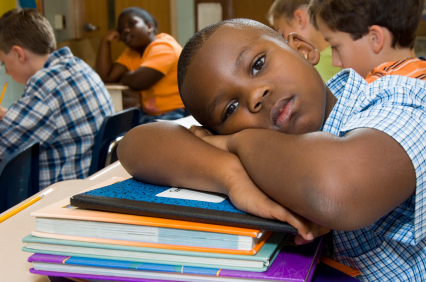 Children repeatedly exposed to violence, whether directly through community or domestic violence, or physical abuse, or virtually through film, TV and the news media, may show signs of trauma. Trauma is experienced when a person’s normal coping mechanisms are overwhelmed, leaving them feeling helpless, hopeless and unsafe. Because every person, including a child, is wired for survival, threat to safety activates brain mechanisms that are programmed to protect by fighting, fleeing or freezing. Normally, the brain returns to normal functioning once the threat is over. However, when that threat to safety is ongoing, such as in the case of a child living in a violent community or home, or repeatedly exposed to violence in the media, the brain may be in constant fight, flight or freeze mode, and the survival response may be easily triggered by seemingly harmless experiences, such as not having what they want, a parent talking loudly, or a sudden loud noise.
Children repeatedly exposed to violence, whether directly through community or domestic violence, or physical abuse, or virtually through film, TV and the news media, may show signs of trauma. Trauma is experienced when a person’s normal coping mechanisms are overwhelmed, leaving them feeling helpless, hopeless and unsafe. Because every person, including a child, is wired for survival, threat to safety activates brain mechanisms that are programmed to protect by fighting, fleeing or freezing. Normally, the brain returns to normal functioning once the threat is over. However, when that threat to safety is ongoing, such as in the case of a child living in a violent community or home, or repeatedly exposed to violence in the media, the brain may be in constant fight, flight or freeze mode, and the survival response may be easily triggered by seemingly harmless experiences, such as not having what they want, a parent talking loudly, or a sudden loud noise.
What does trauma look like in children?
Signs of trauma often look like disruptive behaviour, a child just being rude and defiant, or quiet and withdrawn. If you are seeing any of the following in your child or student, consider whether they may have experienced trauma, such as experience of or exposure to violence:
- Difficulty concentrating or paying attention
- Difficulty focusing eyes to read
- Inability to finish tasks
- Difficulty learning new information well
- Fidgety or unable to keep still
- On edge, or on guard even when in a safe environment
- Easily startled
- Can’t stay seated
- Compulsive talking
- Easily distracted
- Short tempered, always ready for a fight
- Aggression
- Defiance
- Inattentiveness
- Daydreaming
Some children, especially boys, act out their fear and anger by hitting bullying, teasing and engaging in dangerous activities. Others, particularly girls, turn their fear and anger inward, causing physical ailments such as frequent headaches or tummy aches, bedwetting, or showing signs of withdrawal, anxiety or depression.
Caregivers and teachers often respond to these behaviours with impatience, frustration, reprimand and punishment—all of which may be interpreted by the survival brain as threat, triggering even more of the problem behaviour. The challenge, too, is that many times the adults have also been exposed to the same violence or other trauma producing events, and are in fight, flight or freeze mode, too!
What can teachers and caregivers do?
First, parents and teachers need to be a “safe space”
for children who have experienced trauma and violence.
- Be calm and stay cool when dealing with challenging behaviours. Remember, many of these behaviours are ways in which their brains are trying to help them survive. Reacting rather than responding will appear to be yet another threat from which the brain will want to protect the child.
- Be aware of your own responses. Before reacting to the behaviours, take a moment to check yourself. Take a step back, plant your feet solidly on the ground, and take a few deep breaths through your nose into your belly, and slowly out through your mouth. Wait until you are in a calm state before responding in a soothing voice. If necessary, take a personal time out to engage in a brief calming activity—whatever works for you.
- Provide comfort and a listening ear. Give children space to talk freely about their feelings, worries or fears. After they share, use your own words to repeat what you heard them say. Pay attention to body language, tone of voice and facial expressions, too.
Protect children from exposure to violence, as much as possible
- Minimise children’s exposure to media violence. Avoid discussing violent news etc. in the presence of children, especially young children. Television news can be particularly graphic, so restrict children from viewing. Filter the news and limit to newspaper or radio.
- Monitor children’s TV and movie viewing so as to limit repeated exposure to scenes of violence and aggression. Pay attention to ratings.
- Pay heed to video games ratings, as well. Stick to those rated for children.
- Avoid fighting and arguing in front of children. Even babies will be negatively impacted by fighting and marital conflict in the home. Seek counselling if you are having frequent and intense conflict with your spouse or partner.
Here are some useful exercises and activities that can help children manage the effects of violence exposure:
- Let children draw their worries or fears, and then draw the opposite. Let them talk about what they drew.
- Lead students in focused or relaxation breathing exercises and meditations, e.g. Heart and Belly Breathing,or Popcorn-Candle Breathing described below.
- Have children draw about a time they felt good, happy, and safe recently or before the violence. Then have them study their artwork, close their eyes and notice where in their bodies they can feel the goodness, happiness, etc, Let them discuss the difference between the pleasant feelings and the unpleasant ones. Point out how they were able to feel the pleasant feelings just by thinking about that happy time. Let them know they have the super power to feel those pleasant feelings any time they want, just by thinking about their happy time.
- Similarly, you can have children draw a picture of their safe place. This can be real or imagined, Have them talk about their drawing, and describe what it feels like, and smells like. Let them know that they can always go to their safe place by looking at their picture or imagining it in their minds.
- Physical activities can help to ground children in the present moment, rather than dwelling in the past, violent event(s). Activities like dancing with stomping movements or drumming can be very helpful for grounding children. Ask them to notice how the ground or drumming surface feels as they dance or drum. Follow up with a moment of quiet breathing.
- When children are experiencing difficult emotions, have them choose a crayon that they think is a good colour for that feelings, and then scribble or rapidly colour the feeling out onto paper, filling up the paper as they release the feeling. When they are finished, they can talk with you about what it was like doing it.
- Let children engage in physical activities such as running and jumping to help release some of that survival energy.
- Use bubble blowing to practice deep breathing. Blowing giant bubbles is a great way to practice the deep, slow exhales that activate the calming (parasympathetic) nervous system. Besides which, bubble blowing is just fun!
It’s good to follow up release exercises with grounding and or relaxation exercises. This will also help children to learn how to regulate their energy and emotions.
Heart and Belly Breathing
- Ask children, “Place one hand on your belly and the other hand on your heart.”
- Ask them to turn on their superpowers of noticing, just like a detective or scientist.
- Next, ask them to see if they can notice their breathing, and if they can notice what happens to the hand on their belly when they breathe in, and what happens when they breathe out.
- Let them keep noticing for about a minute. Tell them that if they start to think about or notice something else, that’s okay. If that happens, they can just go back to noticing the hand on their belly again.
- For older children, you can next ask them to see if they can notice when the breath goes up behind the hand on their heart. Have them notice how the air moves in through the nose, into their belly, and up behind the hand on their heart as they breathe in, and then down from the heart area to the belly and out through the nose as they breathe out. Keep noticing from 1 to 3 minutes.
Popcorn Candle Breathing
Say to the children:
“Imagine you have some popcorn (or pizza or fried chicken) in your right hand, and a birthday cake with candles in your left hand. We’re going to smell the popcorn and then blow out the candles. First, let me show you how.”
Demonstrate by inhaling the “popcorn” in your right hand deeply through your nose, and then blowing out the “candles” in your left hand with a long out breath through your mouth. It is best if the exhale (blowing out) takes about twice as long as the inhale (smelling the popcorn).
Have the children do it with you five (5) times.
Written by Marie Reynolds, Paediatric Psychotherapist & Clinical Social Worker
Learn More